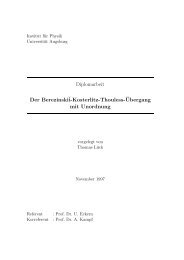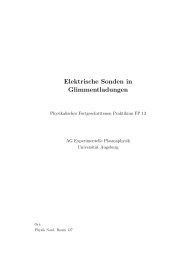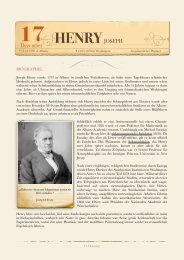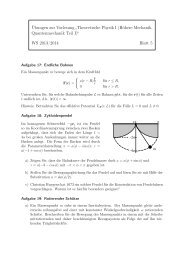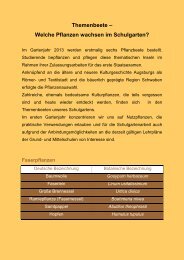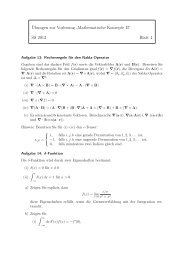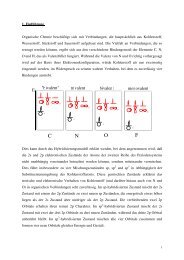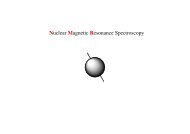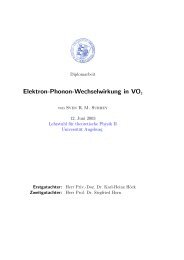Driven Quantum Systems - Institut für Physik
Driven Quantum Systems - Institut für Physik
Driven Quantum Systems - Institut für Physik
You also want an ePaper? Increase the reach of your titles
YUMPU automatically turns print PDFs into web optimized ePapers that Google loves.
258 <strong>Driven</strong> <strong>Quantum</strong> <strong>Systems</strong><br />
in a stroboscopic manner. Such a procedure generates a discrete quantum map. With<br />
Ψ α (x, t =0)=Φ α (x, t = 0), its time evolution follows from (5.11) as<br />
Ψ(x, t) = ∑ α<br />
c α exp(−iɛ α t/¯h)Φ α (x, t). (5.43)<br />
With Ψ(x, t) =〈x|K(t, 0)|Ψ(0)〉, a spectral representation for the propagator<br />
follows from (5.44) with Ψ(x, 0) = δ(x − x 0 )as<br />
K(x, t; x 0 , 0) = 〈x|K(t, 0)|x 0 〉, (5.44)<br />
K(x, t; x 0 , 0) = ∑ α<br />
exp(−iɛ α t/¯h)Φ α (x, t)Φ ∗ α(x 0 , 0). (5.45)<br />
This relation is readily generalized to arbitrary propagation times t>s, yielding<br />
K(x, t; y,s) = ∑ α<br />
exp(−iɛ α (t − s)/¯h)Φ α (x, t)Φ ∗ α (y, s). (5.46)<br />
Equation (5.46) presents an intriguing result, which generalizes the familiar form of<br />
time-independent propagators to time-periodic ones. Note again, however, that the<br />
role of the stationary eigenfunction ϕ α (x) is taken over by the Floquet mode Φ α (x, t),<br />
being orthonormal only at equal times t = s.<br />
5.3.4 Generalized Floquet theory<br />
In the previous subsections we restricted ourselves to pure harmonic interactions. In<br />
many physical applications, e.g. see in [8], however, the time-dependent perturbation<br />
has an arbitrary, for example, pulse-like form that acts over a limited time regime<br />
only. Clearly, in these cases the Floquet theorem cannot readily be applied. This<br />
feature forces one to look for a generalization of the quasienergy concept. Before we<br />
start doing so, we note that the Floquet eigenvalues ɛ αn in (5.16) can also be obtained<br />
as the ordinary Schrödinger eigenvalues within a two-dimensional formulation of the<br />
time-periodic Hamiltonian in (5.10). Setting ωt = θ, (5.10) is recast as<br />
H(t) =H 0 (x, p)+V(x, θ(t)). (5.47)<br />
With ˙θ = ω, one constructs the enlarged Hamiltonian H˜ (x, p; θ, p θ ) = H 0 (x, p) +<br />
V(x, θ)+ωp θ ,wherep θ is the canonically conjugate momentum, obeying<br />
˙θ = ∂H˜<br />
∂p θ<br />
= ω. (5.48)<br />
The quantum mechanics of H˜ acts on the Hilbert space of square-integrable functions<br />
on the extended space of the x-variable and the square-integrable periodic functions on<br />
the compact space of the unit circle θ = θ 0 + ωt (periodic boundary conditions for θ).<br />
With V (x, t) given by (5.22), the Floquet modes Φ αk (x, θ) and the quasienergies ɛ αk



